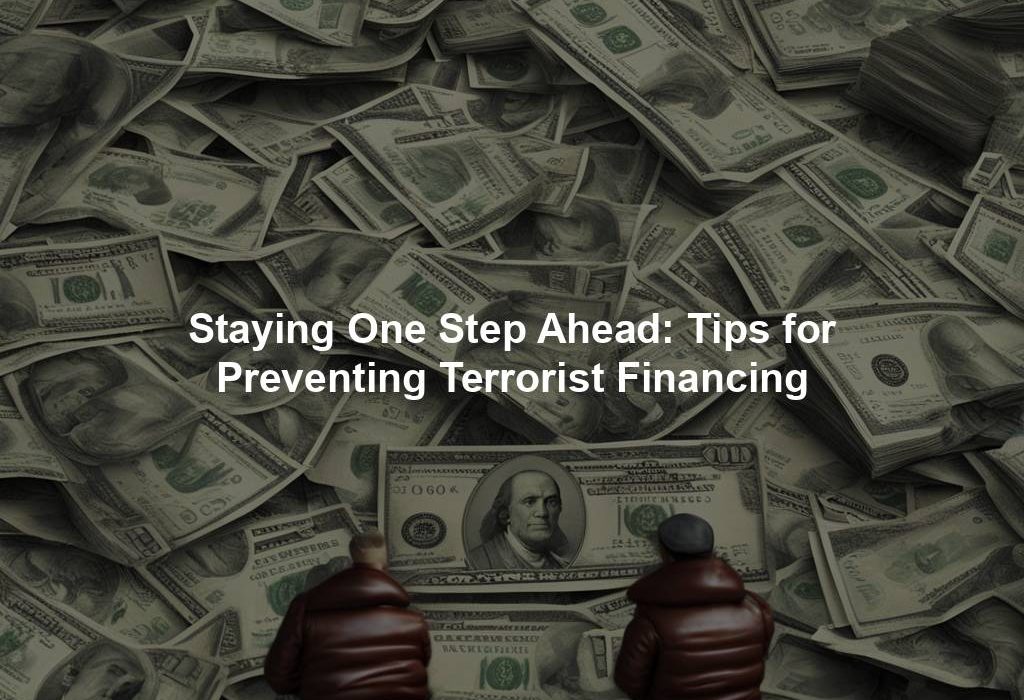In the unyielding battle against terrorism, disrupting the financial lifeline to terrorist groups stands as a crucial tactic embraced by governments and law enforcement agencies worldwide. Terrorist financing serves as a cornerstone in the realm of terrorism, empowering extremist factions to bankroll their operations, amass new recruits, and execute attacks. Recent times have witnessed a heightened emphasis on thwarting terrorist financing, with a collaborative effort between governments, financial institutes, and various stakeholders cultivating strategies and tools to sever the funnel of funds to terrorist entities.
According to the Financial Action Task Force (FATF), a governmental body setting standards and advocating measures against money laundering and terrorist financing, terrorist financing encompasses channelling funds or resources to terrorist organizations or individuals with the motive of propelling their agenda forward. This can encompass fundraising via illicit activities like drug trafficking, arms smuggling, human trafficking, or garnering donations from sympathetic entities or individuals.
Halting terrorist financing poses a multifaceted and daunting challenge, requiring synergy and alignment among various actors such as governments, financial bodies, law enforcement, and nonprofits. This article delves into key insights and strategies to proactively combat terrorist financing and maintain a step ahead in this critical fight.
1. Embrace Know Your Customer (KYC) and Customer Due Diligence (CDD) Procedures
The bedrock of thwarting terrorist financing lies in deploying Know Your Customer (KYC) and Customer Due Diligence (CDD) protocols within financial institutions. These protocols mandate financial bodies to authenticate customer identities, evaluate money laundering and terrorist financing risks, and scrutinize transactions for anomalies.
KYC and CDD measures empower financial entities to flag and report suspicious transactions entwined with terrorist financing. By acquainting themselves with their clientele and monitoring transactions, financial institutions can intercept and forestall the funds’ flow to terrorist organizations.
2. Embed Anti-Money Laundering (AML) and Combating Financing of Terrorism (CFT) Compliance Systems
In the arsenal against terrorist financing, the integration of Anti-Money Laundering (AML) and Combating Financing of Terrorism (CFT) compliance frameworks serves as a linchpin. These frameworks aid financial institutions in adhering to regulatory standards and global norms aimed at curbing money laundering and terrorist financing.
AML/CFT compliance blueprints encompass policies and procedures for risk evaluation, customer due diligence, transaction monitoring, identifying suspicious activities, and training personnel to detect and deter terrorist financing. By instituting AML/CFT compliance structures, financial institutions fortify their defenses against being unwitting conduits for terrorist financing.
3. Cultivate Public-Private Collaborations
Tackling terrorist financing necessitates a symbiotic rapport between the public and private domains. Governments, financial bodies, law enforcement agencies, and nonprofits must forge alliances to exchange information, intelligence, and best practices for disrupting the cash pipelines to terrorist outfits.
Public-private partnerships aid in unearthing and tracing terrorist financing networks, probing dubious activities, freezing assets, and prosecuting individuals or entities complicit in terrorist financing. Through collective efforts, stakeholders bolster their resolve to avert terrorist financing and safeguard financial systems from exploitation by terrorist entities.
4. Regulate Charitable and Non-Profit Ventures
Charities and non-profit ventures pose as potential conduits for terrorist organizations seeking financial backing for their operations. To combat terrorist financing, governments and regulators must enact mechanisms to oversee and govern charities and non-profit entities to prevent their misuse as facades for terrorist financing.
Governments can mandate charities and non-profit bodies to register with regulatory bodies, conduct due diligence on benefactors and beneficiaries, and report suspicious movements to law enforcement agencies. By monitoring charities and non-profit ventures, governments can thwart terrorist entities from leveraging these avenues to finance their endeavors.
5. Boost Information Exchange and Intelligence Sharing
Information exchange and intelligence sharing play pivotal roles in deterring terrorist financing. Governments, financial bodies, law enforcement agencies, and other stakeholders must collaborate and disseminate information and intelligence to identify and obstruct the monetary flows to terrorist outfits.
Utilizing information and intelligence sharing, stakeholders can trail suspicious activities, pinpoint terrorist financing networks, freeze assets, and bring to justice individuals or entities implicated in terrorist financing. Strengthened information and intelligence sharing fortify endeavors to curb terrorist financing and shield financial systems from exploitation by terrorist factions.
6. Conduct Thorough Risk and Vulnerability Assessments
Thorough risk and vulnerability assessments stand as imperative tools in the fight against terrorist financing. Financial entities, governments, and other stakeholders must conduct assessments to pinpoint and evaluate the perils of money laundering and terrorist financing within their purviews and sectors.
Risk evaluations aid stakeholders in comprehending vulnerabilities in their frameworks and processes that could be exploited by terrorist groups. By executing risk and vulnerability assessments, stakeholders can devise targeted strategies and measures to avert terrorist financing and safeguard their financial systems from being misused for financing terrorism.
7. Prioritize Training and Capacity Augmentation
Training and capacity augmentation stand as pivotal pillars in combating terrorist financing. Governments, financial bodies, law enforcement, and other stakeholders must invest in training initiatives to enlighten their personnel on detecting and deterring terrorist financing.
By imparting AML/CFT compliance education, customer due diligence training, and guidelines on reporting suspicious transactions, stakeholders enhance their capacities to combat terrorist financing. Training initiatives empower personnel to spot red flags of terrorist financing, report suspicious activities, and adhere to regulatory requirements to curb money laundering and terrorist financing.
In wrapping up, combatting terrorist financing mandates a comprehensive approach characterized by collaboration and coordination among diverse stakeholders. By implementing KYC and CDD protocols, AML/CFT compliance frameworks, fostering public-private partnerships, safeguarding charities and non-profits, fortifying information sharing and intelligence exchanges, executing risk and vulnerability assessments, and investing in training and capacity building, stakeholders can gain an edge in the combat against terrorist financing. Through synergy and shared practices, stakeholders can disrupt the financial arteries feeding terrorist factions and shield financial systems from terrorist exploitation.




